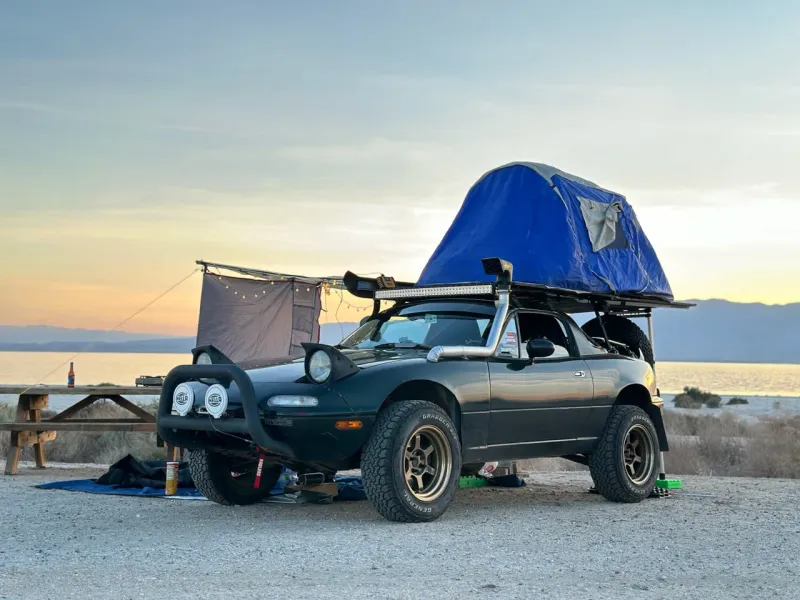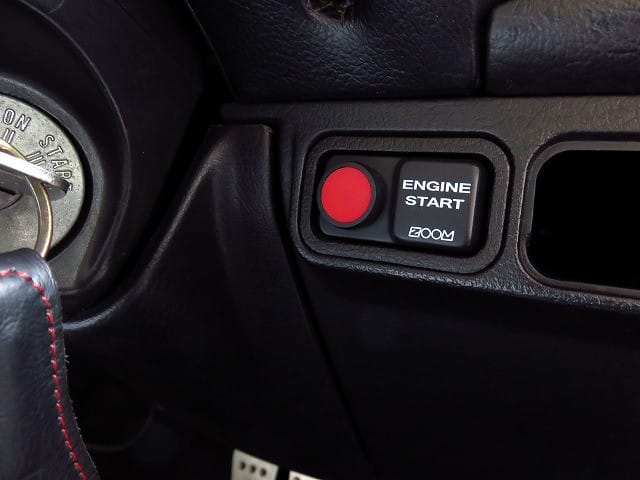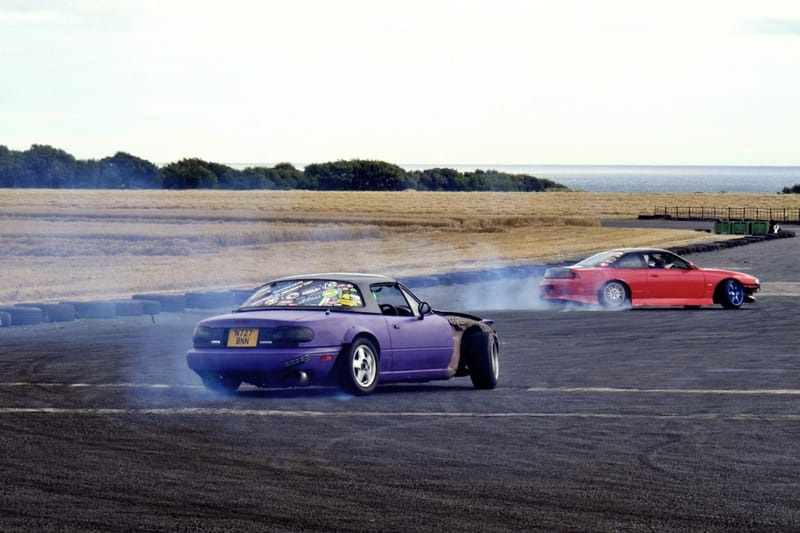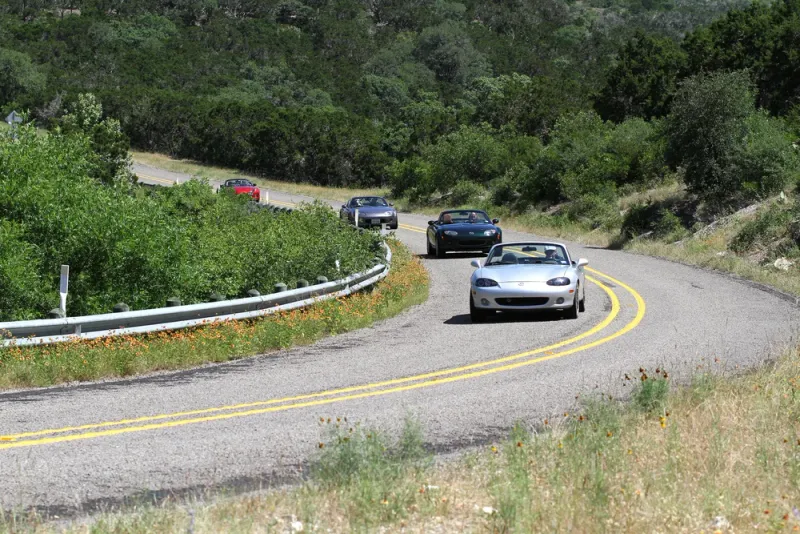Miata Exocet: Street-Legal or Track-Only? Choosing Your Path
Choosing between a street-legal Exocet and a track-first build is the fork every donor-based builder hits: do you keep DMV-friendly gear, emissions niceties, and creature comforts for car-shows and HPDE, or strip weight and budget toward cages, aero, and pace without worrying about registration?
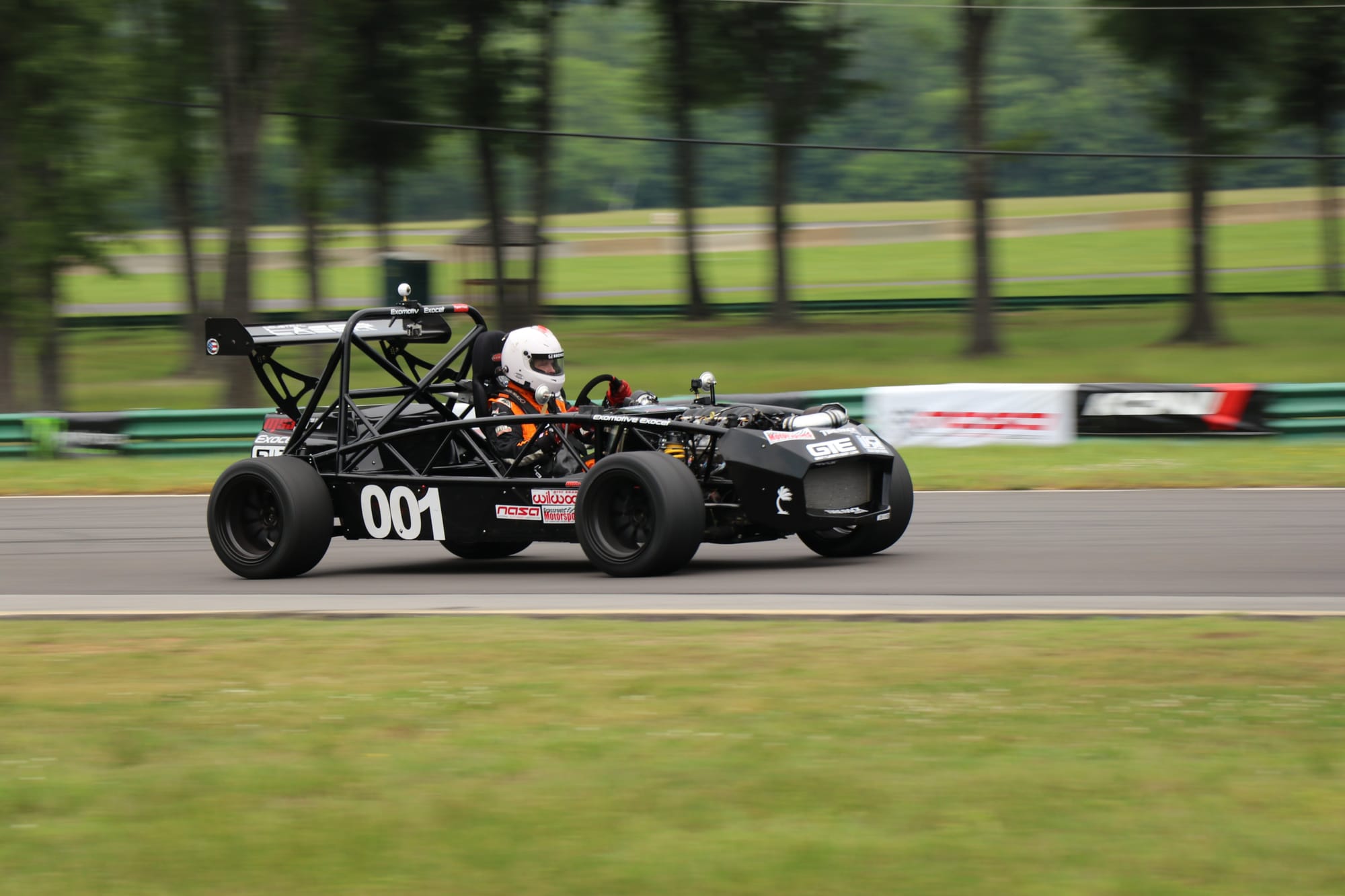
We recently explained the Exocet platform: what carries over from a Miata donor, model options, weights, and rough costs. This sequel tackles the fork most builders eventually face: do you build a street-legal Exocet you can drive to cars & coffee and HPDE, or a track-only weapon that skips DMV pain and pours budget into pace and safety? Below, we translate the legal and rulebook realities into practical parts choices, timelines, and budgets, so you can choose with eyes open and avoid rework.
Street-legal Exocet. You register under your state’s “specially constructed/assembled” vehicle process, meet whatever emissions and road-equipment rules apply, and obtain specialty insurance. This is the “live-with-it” path: coffee runs, weekend backroads, and HPDE/Time Trials without a trailer.

Track-only Exocet. You don’t register it for the road. Instead, you optimize for performance and compliance with motorsport rulebooks, rollover protection, seats, harnesses, fire gear, plus consumables, alignment, and aero. The gatekeepers aren’t the DMV but sanctioning bodies (HPDE/TT vs. wheel-to-wheel).

How to keep it Street-Legal
Federal concepts. There’s no one-stop federal “kit-car approval.” If a vehicle is sold as a complete new car, it must meet federal safety standards; most Exocets are personal builds that reuse donor components, so final legality is largely determined by your state. On emissions, the national rule of thumb is simple: don’t tamper. If you use an OBD-II Miata donor (1996–2005), expect to keep catalytic converters, oxygen sensors, evaporative controls, and readiness monitors intact. Engine swaps generally need to match an equal-or-newer certified configuration, complete with its emissions hardware.
State reality. States typically register Exocets via “specially constructed” or “assembled” procedures. You’ll bring proof of ownership for the donor, receipts for major parts, a completed build, and the car itself for inspection and VIN assignment or verification. Inspectors usually check for DOT/SAE-marked lighting, mirrors, a working horn, a windshield or approved eye protection, fenders or mudguards where required, wipers if you run a windshield, and emissions evidence appropriate to your donor and model year. Details vary, so read your state’s checklist before you start wiring and plumbing, small choices early (for example, where to mount a plate lamp) can save hours later.
California case study (SPCNS/SB100). California issues a limited number of SB100 sequence numbers each year for specially constructed vehicles. With one of those numbers, smog testing follows a special pathway governed by the BAR Referee program and the label they affix after inspection. The process involves the DMV, a state inspection, and the BAR Referee visit. Paperwork accuracy, emissions plausibility, and timing matter; the certificates are limited annually and go fast.
Track-Only: What Rules Actually Gate You

For HPDE and Time Trials, expect baseline tech: firm pedal, no leaks, proper battery tie-down, working brake lights, decent tires, and, crucially for open cars, documented rollover protection. Convertibles typically need a roll bar that meets specific tubing dimensions and height rules; padding and headrest clearance are enforced. For wheel-to-wheel racing and most hillclimbs, plan on a full cage built to a specific spec, plus more stringent seat, harness, fuel, and fire requirements. If your endgame is competition, choosing the Exocet Race chassis from day one simplifies the path: its cage geometry and attachment points are designed for those rulebooks.
How the Choice Changes Your Parts List
Shared donor carry-overs. Engine, transmission, PPF, subframes, control arms, uprights, hubs, brakes, steering, harnesses, and much of the Miata’s switchgear, your first article covered what moves over and what the kit supplies.
Street-legal adds.
- Road-equipment: DOT/SAE headlamps and turn signals, tail and plate lights, mirrors, horn, and usually cycle fenders. If you run a windshield, plan for wipers and washer.
- Emissions plumbing: For OBD-II donors, route EVAP correctly, keep both oxygen sensors and the catalytic converter(s), and build a leak-free exhaust that actually fits under the frame.
- Noise and civility: Quieter mufflers, heat shielding near the cat, and basic splash protection make life better, and help pass inspections.
- Paper trail: A binder with donor title, receipts, chassis and engine numbers, and build photos.
- Insurance-friendly touches: Laminated windshield glass, theft deterrents, and tidy wiring all help underwriting.
Track-only adds.
- Safety core: A rulebook-compliant roll bar or full cage, fixed-back seats with appropriate side mounts, in-date 5/6-point harnesses, a kill switch, fire extinguisher or plumbed system, and front/rear tow hooks.
- Pace enablers: Brake pads and fluid up to the job, brake ducting on hot tracks, an aggressive alignment, and optional aero (wing and front aero balance) if your classing allows it.
- Presentation: Numbers and class letters placed to spec, plus a clean, leak-free car that makes tech inspection a non-event.
Registration Guide for Street-Legality
- Study your state’s process. Print the equipment list and bring it to the garage. Decide on donor year before you buy parts; an OBD-I car can simplify inspections, while OBD-II offers modern diagnostics but demands emissions completeness.
- Document the donor and the kit. Keep titles, bills of sale, and receipts for major components. Photograph the car at key stages.
- Build to pass. Wire and plumb with inspections in mind: legal lighting, horn, fenders, plate light, and emissions equipment appropriate to your donor.
- Inspection and VIN. Expect a weight ticket, VIN assignment or verification, and an equipment check.
- Emissions step. In strict states, you may need a referee appointment or a specific exemption path. Prepare your story (and hardware) to match your donor’s year.
- Insure it. Specialty carriers cover modified and kit vehicles with usage limits and storage expectations. Get a quote once the car is presentable; bring photos and your documentation binder.
Track-Only Tech Checklist
- Rollover protection that meets the rulebook (bar or cage, correct tube size, correct height beyond the driver’s helmet line).
- Seats and harnesses mounted per manufacturer instructions; harnesses in date.
- Brakes and tires fresh enough to survive a weekend; no leaks or weeping lines; pedal is high and firm.
- Battery secured and terminals covered; kill switch labeled if installed.
- General health: Wheel bearings smooth, lug nuts torqued, throttle returns crisply, no loose wiring or hardware.
- Paperwork: Tech form, helmet certification, numbers, and classing decided before you show up.
Cost and Timeline: Where the Money Really Goes
- Core kit and shipping. Lead times move with demand; confirm timing, crating, and freight before you publish or place your order. If you want powder coat or residential delivery, expect different carriers and costs.
- Street gear. Lighting, mirrors, fenders, windshield and wipers, emissions hardware, plus DMV fees and inspection costs. These are not huge individually, but they add up, and they take time to install cleanly.
- Track gear. Roll bar or cage, fixed-back seats and mounts, harnesses, fire gear, brake pads/fluids/ducting, and tires. Consumables and alignment are recurring line items; pace costs money over time.
- Both paths. “While you’re in there” donor refreshes, bushings, lines, fluids, wheel bearings, pay dividends in reliability and feel.
Insurance Reality (Street vs. Track)
Street-legal. Specialty insurers routinely write agreed-value policies for modified and kit vehicles, often with mileage or usage limits and storage requirements. Clean documentation and photos help.
On track. Standard auto policies exclude HPDE/TT incidents. If you care about physical-damage protection at events, look at single-event HPDE coverage or an annual non-competition track policy. Liability to others at the track is typically outside the scope; read the fine print.
Risk Matrix
Street-legal risks. Emissions surprises, obscure equipment quirks (wipers with a windshield, fenders in certain states), and insurance underwriting delays.
Mitigation. Build to the strictest interpretation of your state’s checklist, keep OBD-II emissions intact, mock up lighting and plates early, and request a preliminary insurance review with photos.
Track-only risks. Failing tech for marginal roll bar geometry or expired belts, and chasing pace before solving cooling and brakes.
Mitigation. Choose a cage or bar that clearly exceeds minimums, buy dated safety gear close to your first event, and invest in brakes and alignment before aero.

